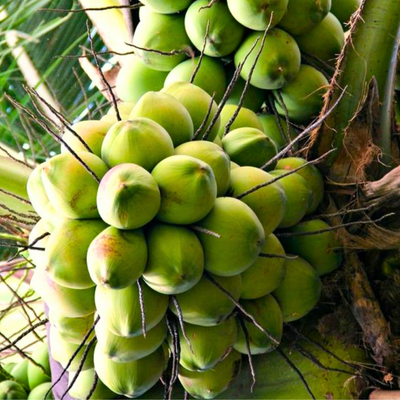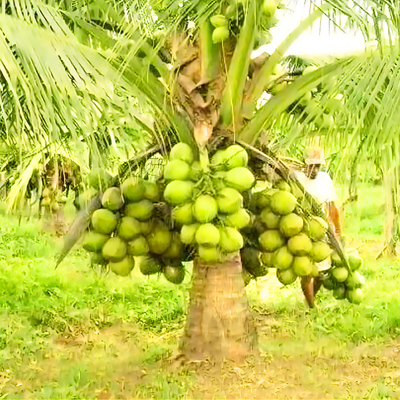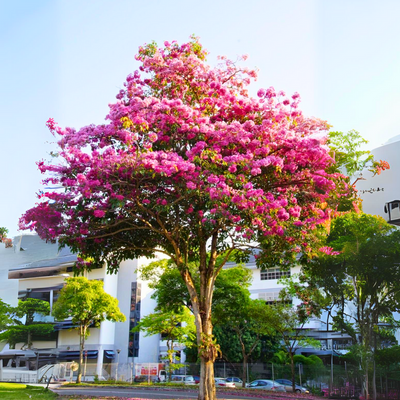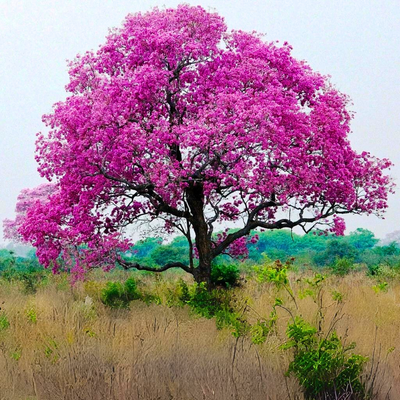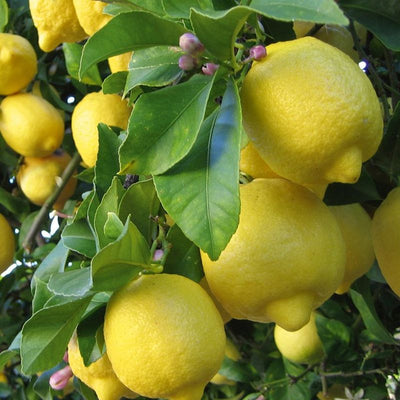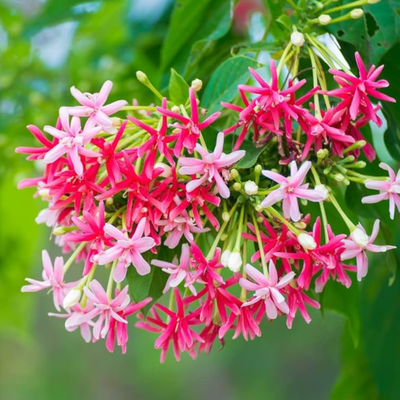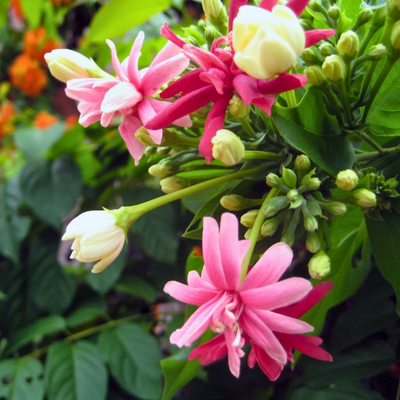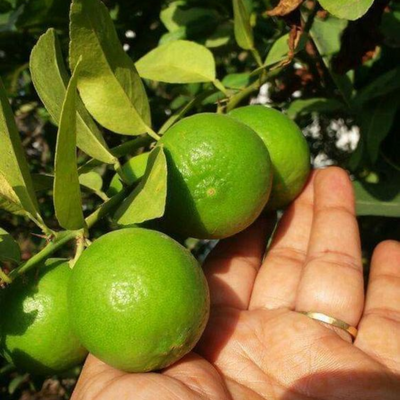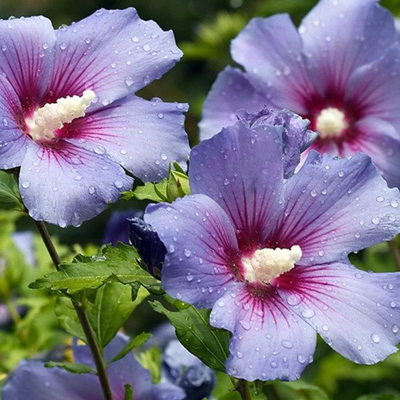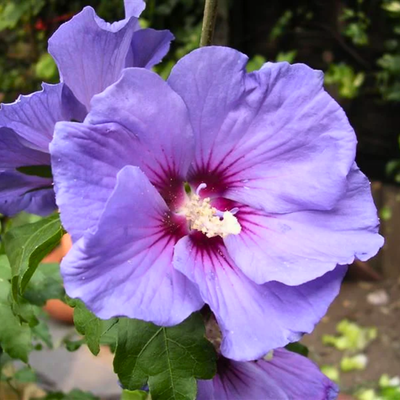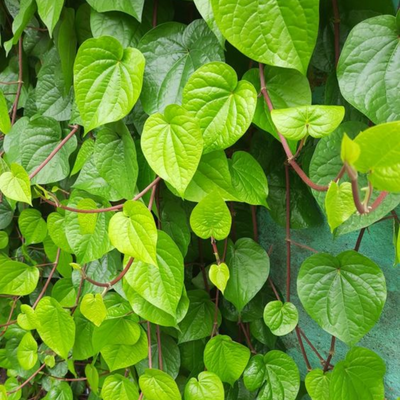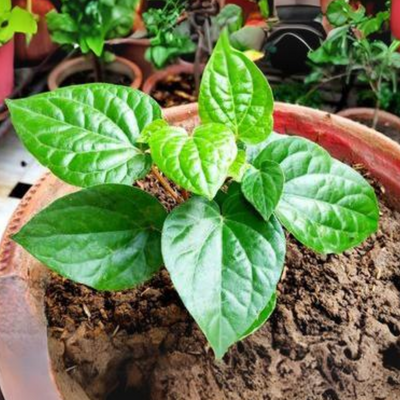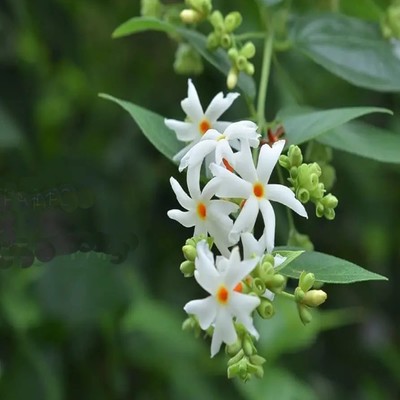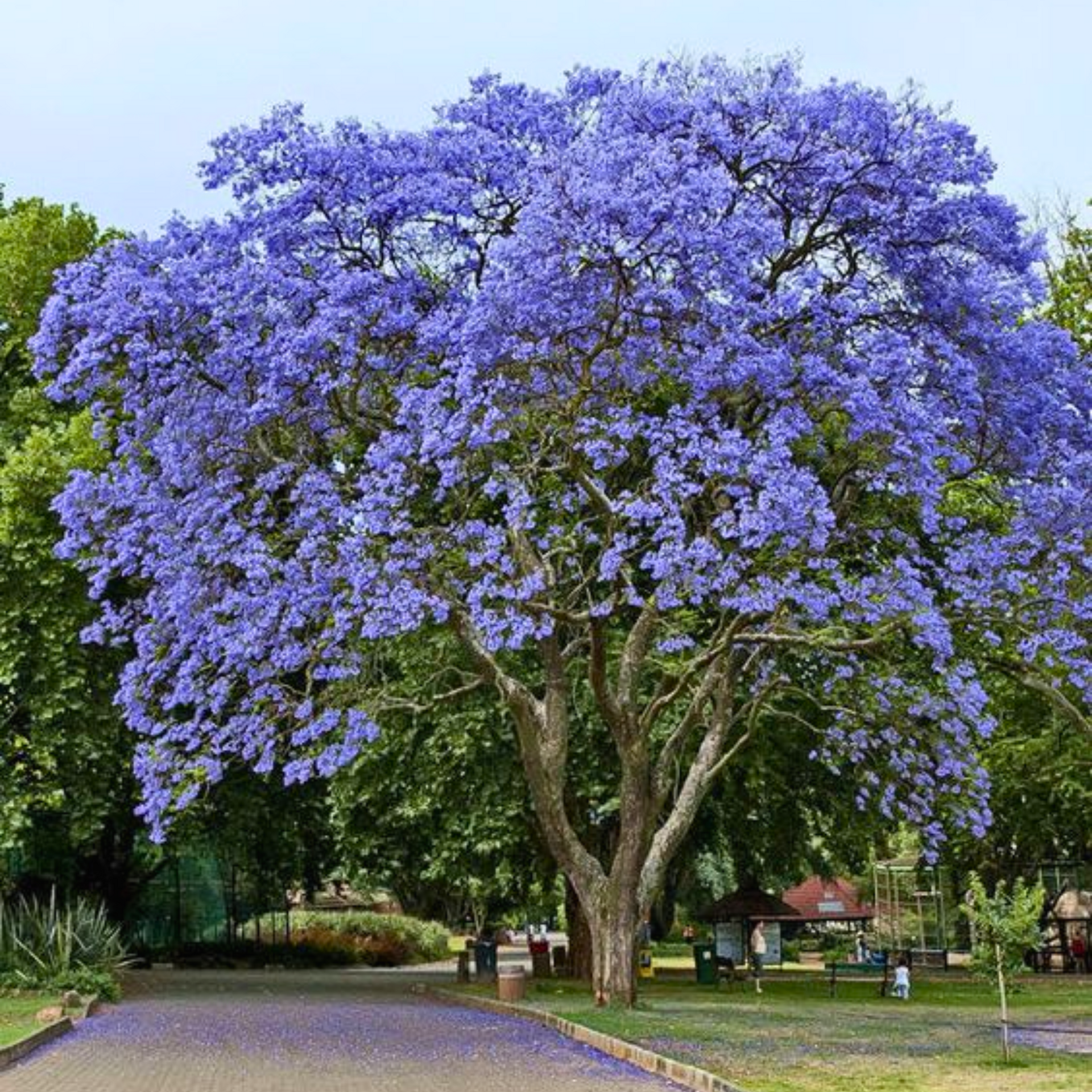

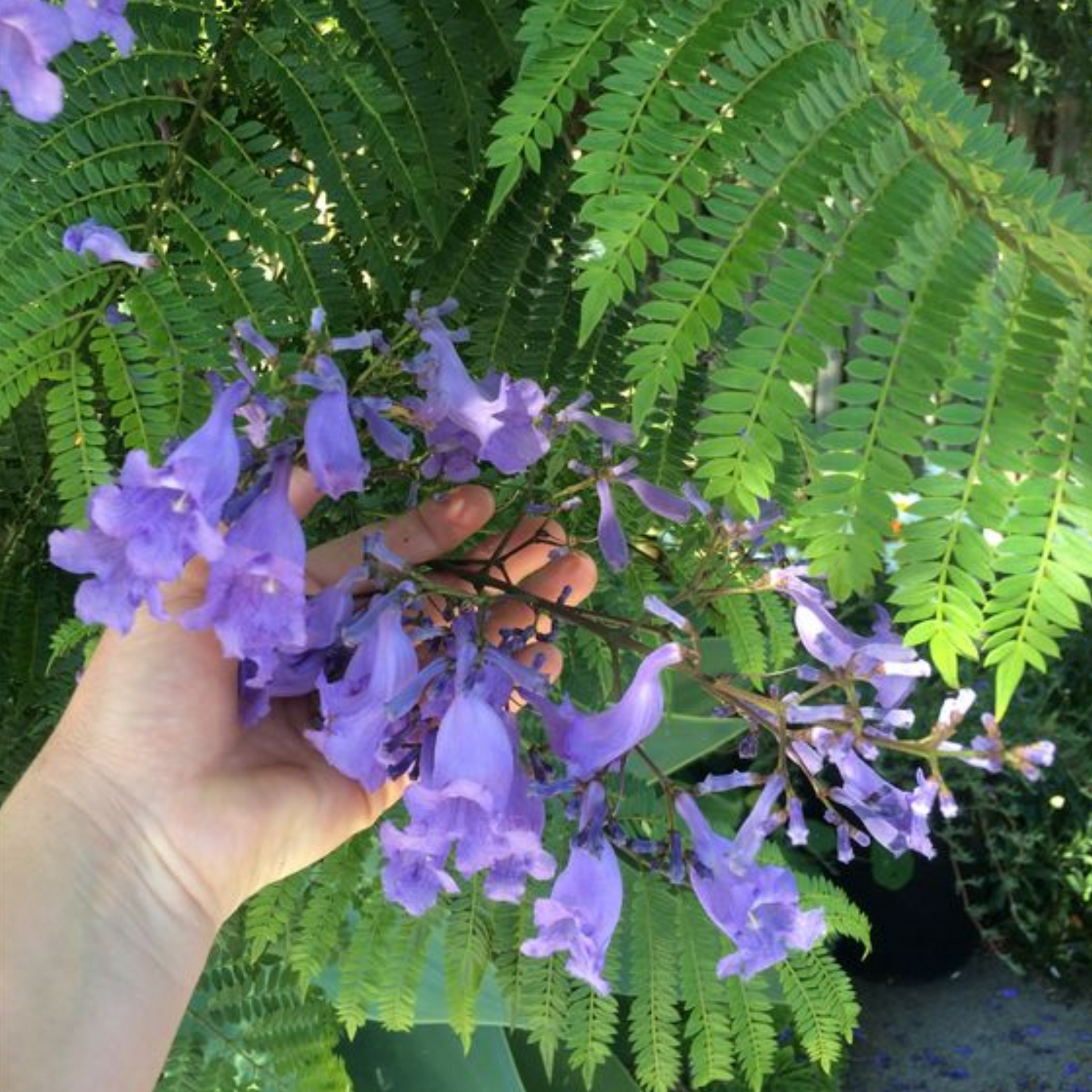


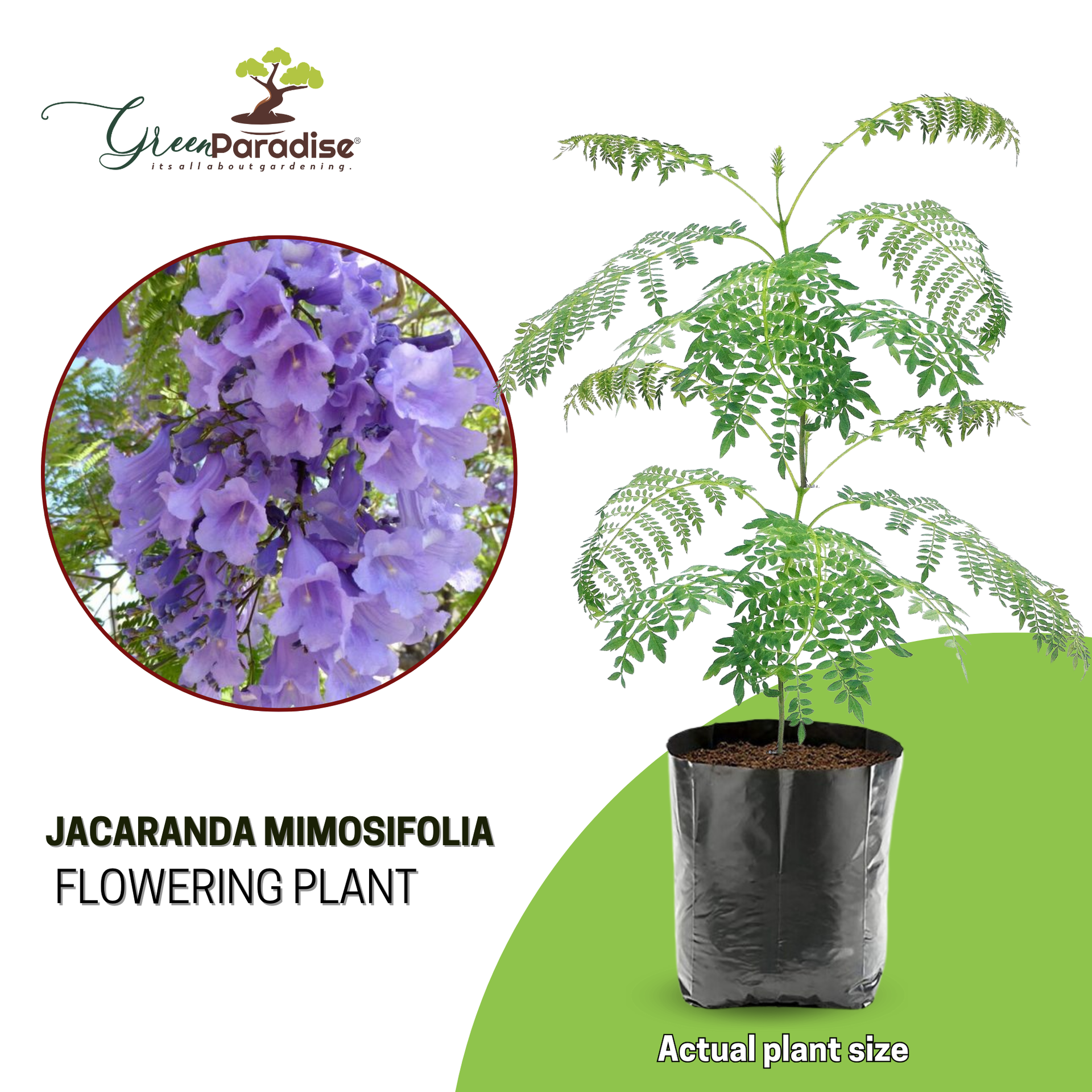
Green Paradise Jacaranda Mimosifolia Plant
Guaranteed Safe Checkout
Green Paradise Offers Beautiful
Jacaranda
Mimosifolia Plant
About Jacaranda Mimosifolia Plant
Jacaranda mimosifolia, commonly known as the Jacaranda or the Blue Jacaranda, is a stunning flowering tree native to South America, particularly Argentina, Bolivia, and Brazil. It belongs to the family Bignoniaceae. Due to its beauty, the tree has been widely planted in various parts of the world, including North America, Africa, Asia, and Australia, where it has become naturalized in some regions.
In the realm of flowering trees, few creations of nature can rival the exquisite charm of the Jacaranda plant. With its captivating lavender blooms and a presence that paints landscapes with a soothing hue, this arboreal wonder stands as a testament to the beauty and diversity found within the plant kingdom. Native to South America but embraced by regions worldwide, the Jacaranda plant is more than just a botanical marvel – it's a symbol of nature's ability to inspire awe and wonder.
The Lavender Canopy
The most striking feature of the Jacaranda plant is undoubtedly its resplendent lavender canopy. When these trees burst into bloom, they create an ethereal atmosphere that seems almost surreal. The delicate, trumpet-shaped flowers drape themselves in clusters, forming a natural canopy that adorns the tree's branches and transforms the surroundings into a dreamy landscape straight out of a fairy tale. It's this enchanting lavender hue that has earned the Jacaranda the moniker of the "Blue Trumpet Tree."
Global Wanderer
Originally hailing from South America, the Jacaranda has taken its majestic beauty on a global journey. Introduced to various parts of the world, including Africa, Asia, and Australia, this ornamental tree has been embraced by different cultures and climates. Each region it graces has incorporated it into their own narratives, making it a symbol of beauty and growth.
Seasonal Poetry
The blooming of Jacaranda trees is not just a visual spectacle; it's a poetry of seasons. In regions where the Jacaranda thrives, its blossoming marks the arrival of spring or summer. The sight of these lavender blooms against a clear blue sky elicits a sense of renewal and vitality, bringing a touch of magic to even the most mundane urban landscapes. Streets lined with Jacaranda trees become avenues of wonder, where nature's artistry meets human ingenuity.
Cultural Significance
Beyond its aesthetic value, the Jacaranda holds cultural significance in many places it has touched. In Brazil, it's associated with folklore and has inspired numerous poems and songs. In Pretoria, South Africa, the annual blooming of Jacaranda trees has become an iconic event, painting the city in shades of lavender. Students in some parts of Australia even associate the blooming of Jacarandas with impending exams, serving as both a reminder of the fleeting beauty of life and the importance of diligence.
Ecosystem Enrichment
The Jacaranda isn't just a pretty face in the botanical world; it plays an essential ecological role too. Its nectar-rich flowers attract pollinators like bees and butterflies, contributing to local biodiversity. The tree's fallen blossoms also enrich the soil with nutrients as they decompose, fostering a healthy ecosystem around it.
Here are some key features and characteristics of the Jacaranda mimosifolia:
Appearance:
- The Jacaranda is a deciduous tree that can reach a height of 15 to 20 meters (about 50 to 66 feet) or more.
- It has a spreading, open crown with fine-textured, fern-like, bipinnate leaves that are bright green in color.
- Throughout the dry season, the tree loses its leaves.
Flowers:
- One of the most remarkable features of the Jacaranda is its stunning floral display.
- The tree produces masses of trumpet-shaped, lavender to bluish-purple flowers, which appear in large clusters during the spring (in its native range) and early summer.
- The blossoms create a beautiful carpet of color beneath the tree as they fall.
Seed pods:
- After the flowers fade, the Jacaranda develops elongated, woody seed pods, about 5-7 cm (2-3 inches) long.
- These pods contain flat, winged seeds and can persist on the tree for an extended period.
Tolerance:
- Jacaranda trees thrive in warm, subtropical, and tropical climates.
- They are well adapted to regions with a distinct wet and dry season, as they can tolerate periods of drought once established.
- They favor soil that drains well and exposure to the full sun.
Ornamental use:
- Jacaranda mimosifolia is widely cultivated as an ornamental tree in gardens, parks, and along streets for its attractive foliage and mesmerizing blooms.
- It's especially popular in regions with mild winters, where the tree's deciduous nature is not an issue.
Allergenic potential:
- Some people may be sensitive to Jacaranda pollen, which can cause allergies in certain individuals during the flowering season.
Cultural significance:
- The Jacaranda is deeply rooted in certain cultures and regions.
- For example, it is the national tree of Argentina, and the city of Pretoria in South Africa is famously known as the "Jacaranda City" due to its abundance of Jacaranda trees.
It's essential to check the specific climate and environmental conditions in your area before planting a Jacaranda, as it may not thrive in extremely cold or arid regions. When properly cared for, the Jacaranda mimosifolia can be a breathtaking addition to any landscape, offering its enchanting display of vivid purple blooms and delicate, fern-like foliage.
How To Grow Blue Jacaranda Plant
The Blue Jacaranda plant, also known as Jacaranda mimosifolia, is a beautiful flowering tree that produces stunning blue-violet blooms. It is native to South America but is now commonly grown in various regions around the world.
Here's a general guide on how to grow a Blue Jacaranda plant:
Climate and Location:
- Ensure that you live in a region with a warm, subtropical or tropical climate.
- Blue Jacaranda plants prefer full sun exposure and well-drained soil.
- They thrive in areas with temperatures that do not drop below freezing.
Planting:
- Blue Jacaranda plants can be grown from seeds or saplings.
- If starting from seeds, plant them in a pot or nursery tray with well-draining soil.
- Up until germination, maintain a constant moisture level in the soil.
- Once the seedlings have grown to a few inches tall, you can transplant them outdoors.
Soil:
- Jacaranda plants prefer slightly acidic to neutral soil with good drainage.
- If the soil in your area is heavy or compacted, consider adding sand or organic matter like compost to improve drainage.
Watering:
- When the tree is young, it will need regular watering to establish a strong root system.
- However, once mature, Jacaranda trees are relatively drought-tolerant and can handle periods of dryness.
- Water the tree deeply but less frequently once it's established.
Mulching:
- Applying a layer of organic mulch around the base of the tree helps retain moisture, regulates soil temperature, and suppresses weed growth.
- Keep the mulch away from the tree trunk to prevent moisture-related issues.
Pruning:
- Prune the Jacaranda tree to shape it and remove any dead or diseased branches.
- The best time to do this is during the late winter or early spring before the new growth begins.
Fertilizing:
- Blue Jacaranda plants don't require excessive fertilization.
- You can use a balanced, slow-release fertilizer once a year during the growing season (spring to summer) to provide essential nutrients.
Pests and Diseases:
- These trees are generally resilient to pests and diseases, but like any plant, they can be susceptible to certain issues.
- Watch for common garden pests such as aphids or whiteflies and apply appropriate organic insecticides if needed.
- Keeping the tree healthy through proper watering and soil management can also help prevent pest and disease problems.
Patience:
- Growing a Jacaranda tree from seed to mature flowering tree can take several years.
- Be patient and consistent with care, and you'll be rewarded with beautiful blue-violet blooms.
Remember that local conditions may vary, so it's always a good idea to check with a local nursery or horticulturist for specific tips and advice tailored to your region. Enjoy the process of growing this lovely tree and marvel at its breathtaking blooms once it reaches maturity.



